Banbury Place
Introduction
Text-to-speech Audio
Images
Gillette Rubber Co. with Eau Claire River in front (ca. 1918-1939)
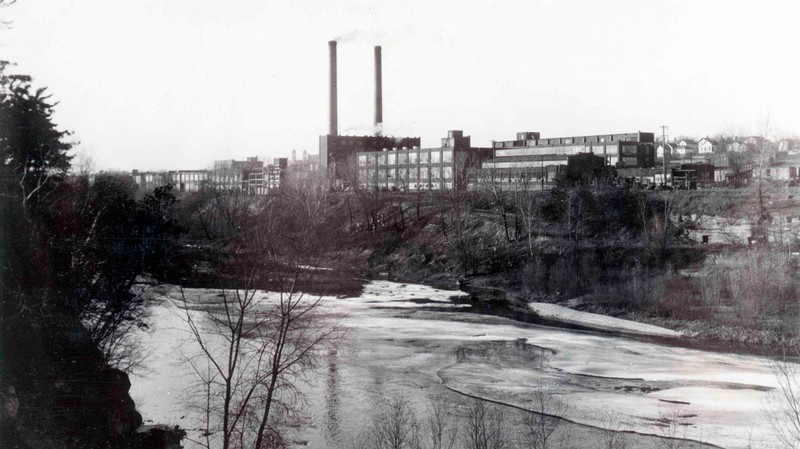
Interior view of Gillette Tire Company Building 13 (ca. 1924-1925)
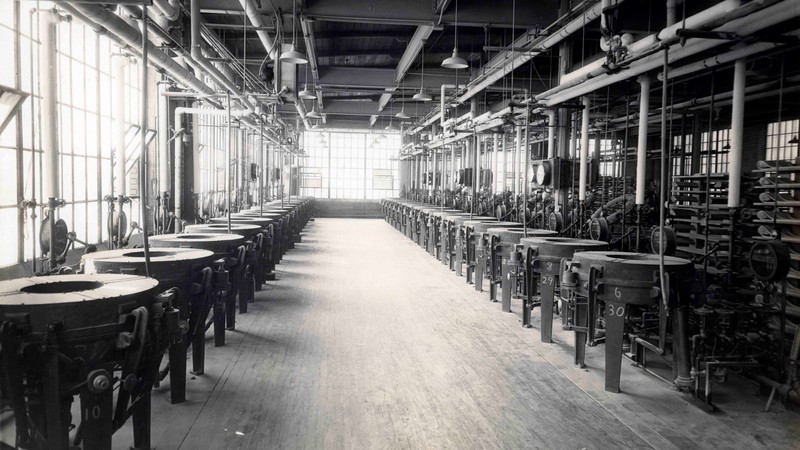
Christian Ehrhard with Special Service tire (1939)
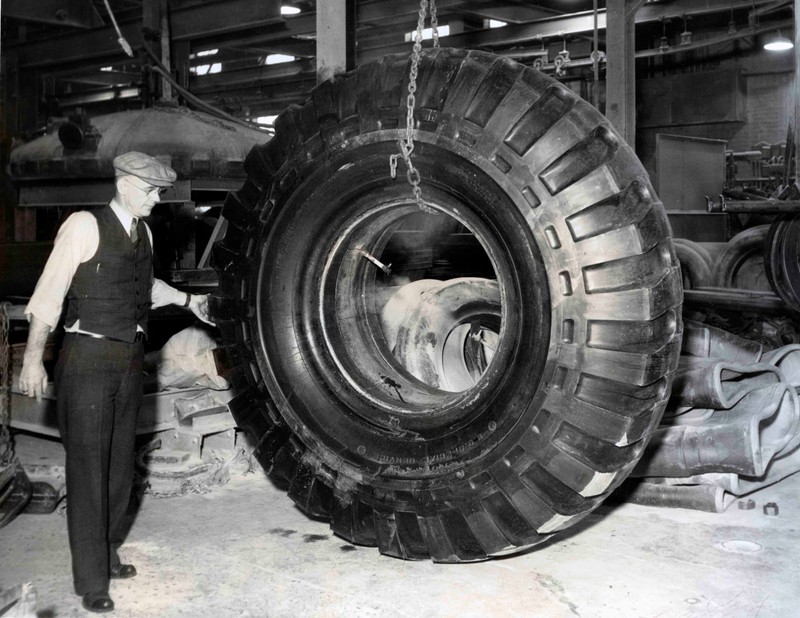
Aerial view of Gillette Rubber Co. (1940)
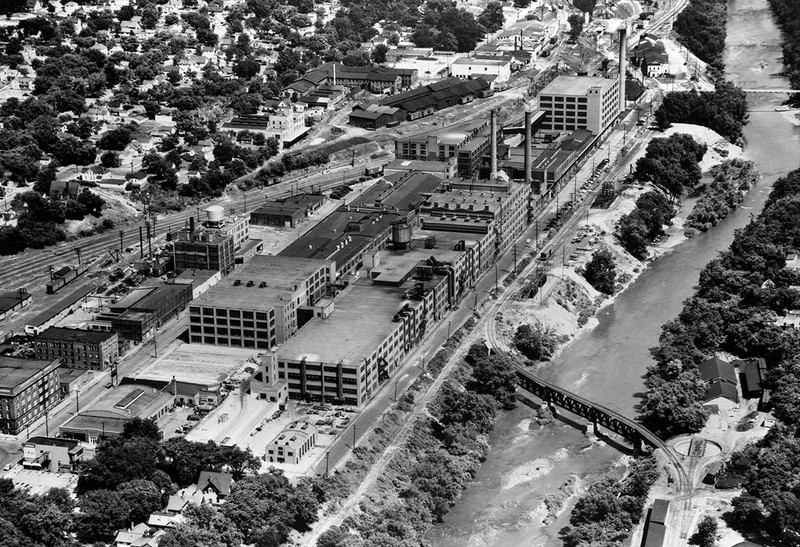
Eau Claire Ordnance plant workers with military officials at "E" award presentation (1943)
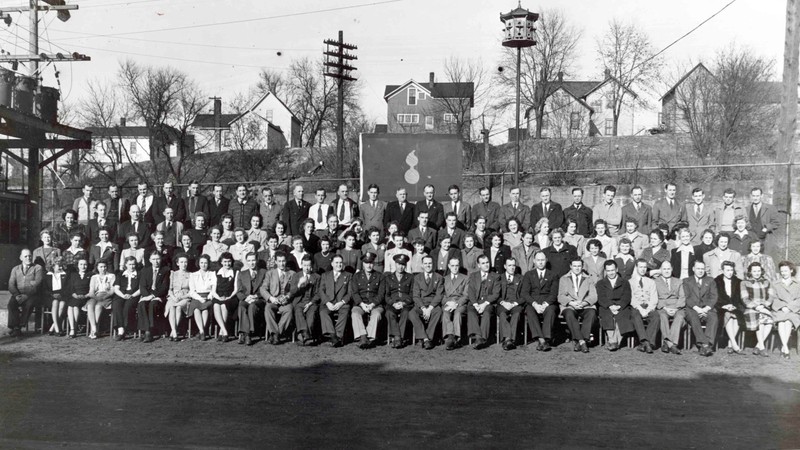
William McNair rolling on tread during tire construction (1944)
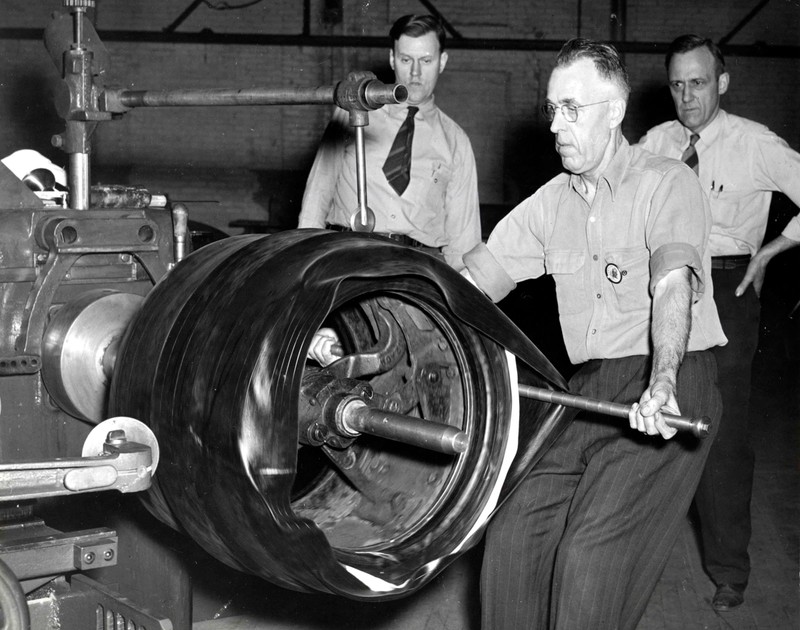
Eau Claire city bus with "Gillette Plant Only" sign (1953)
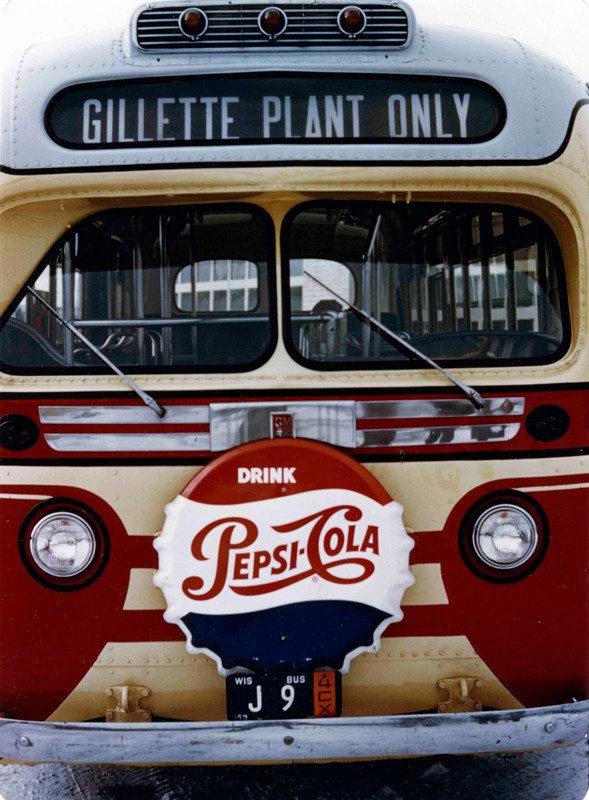
Backstory and Context
Text-to-speech Audio
Gillette Safety Tire Company began operations in 1917, quickly becoming the area’s leading employer. Located just off the banks of the Eau Claire River, the plant produced rubber tires, tubes, and equipment for rubber manufacturing. In 1919 workers at the plant organized a union, which faltered at first but eventually represented employees at the company for nearly 60 years. The United States Rubber Company bought interest in the company in 1931, and eventually took complete control in 1940.
After the bombing of Pearl Harbor, when the United States halted sales of tires for civilian use, U.S. Rubber offered its Eau Claire property to the government in support of the war effort. The plant transitioned to small arms munitions production and took on a new name--Eau Claire Ordnance Plant. During this time, more than 60 percent of the 6000 plant workers were women. In 1943, the plant and its employees received the United States Army-Navy “E” Award for distinguished service and excellence in production. The following year, the Eau Claire Ordnance Plant was sold back to U.S. Rubber and once again began manufacturing tires for the war effort.
Employment at the Eau Claire plant decreased after the war, despite an increase in production. The company purchased land adjacent to the plant and in 1950 built a 4-story finished product warehouse that could store 650,000 tires and tubes. In 1965, U.S. Rubber expanded its production line to include giant tires for mining, logging, and other off-road uses and continued to manufacture them for 14 years.
U.S. Rubber changed its name to Uniroyal, Inc., in 1967 to reflect the expansion of its brands and products. The 79 Uniroyal plants around the world manufactured chemicals, textiles, and plastics; however, the Eau Claire plant was one of five factories that continued to make tires for the parent company. In 1986, Uniroyal, Inc. merged once more with B.F. Goodrich Company under the name Uniroyal Goodrich Tire Company. This merger lasted until 1989, when a French company, Michelin et Cie, purchased the plant and productions, making the company the largest producer of rubber tires globally. The plant maintained this title until it closed permanently in June of 1992, laying off over 1300 employees and ending the legacy of tire production in Eau Claire.
Despite the conclusion of operations at the Eau Claire plant, the site was purchased by local developers in August of the same year. The new owners transformed the former factory into Banbury Place, a multi-functional building that serves diverse business interests in Eau Claire. Today, the old rubber factory hosts apartments, music and art studios, fitness centers, and dog training services, among dozens of other businesses. The long history of industry and production in the heart of the downtown area contribute to the contemporary use of Banbury Place as an Eau Claire landmark preserved by the ongoing engagement with the former plant by the Eau Claire community.
Sources
Historical Timeline, Banbury Place. June 24th 2012. Accessed July 28th 2020. http://www.banbury.com/about-us/history/.
Eau Claire Tire Factory Timeline, Leader-Telegram. June 24th 2017. Accessed July 28th 2020. https://www.leadertelegram.com/eau-claire-tire-factory-timeline/article_9deb970f-aaf7-58ec-8624-811e2b269cb0.html.
Uniroyal, Inc. Records, 1917 -1990, University of Wisconsin-Eau Claire. Accessed July 28th 2020. https://www.uwec.edu/kb/article/uniroyal-inc-records-1917--1990/.
Kocken, Greg. Two Collections Provide a Unique Picture of 20th Century Industrial and Labor History, Wisconsin Historical Society. Accessed July 28th 2020. https://www.wisconsinhistory.org/Records/Article/CS3497.
Uniroyal Closes Nation’s Oldest Tire Plant, Cites Recession, AP News. January 8th 1991. Accessed July 28th 2020. https://apnews.com/10575ce400738eb3bdcdcef7a14528f8.
Museum Collections, Chippewa Valley Museum. Accessed July 28th 2020. https://www.cvmuseum.com/learn-teach/museum-collections/.
"Now It's Official, Uniroyal Is Name." The Daily Telegram (Eau Claire, Wis.) March 1st 1967.6.
Chippewa Valley Museum: 619112-0324
Chippewa Valley Museum: 619112-0035
Chippewa Valley Museum: 619112-0052
Chippewa Valley Museum: 619112-0398
Chippewa Valley Museum: 619112-0093
Chippewa Valley Museum: 619112-0059
Chippewa Valley Museum: 515000-0067
